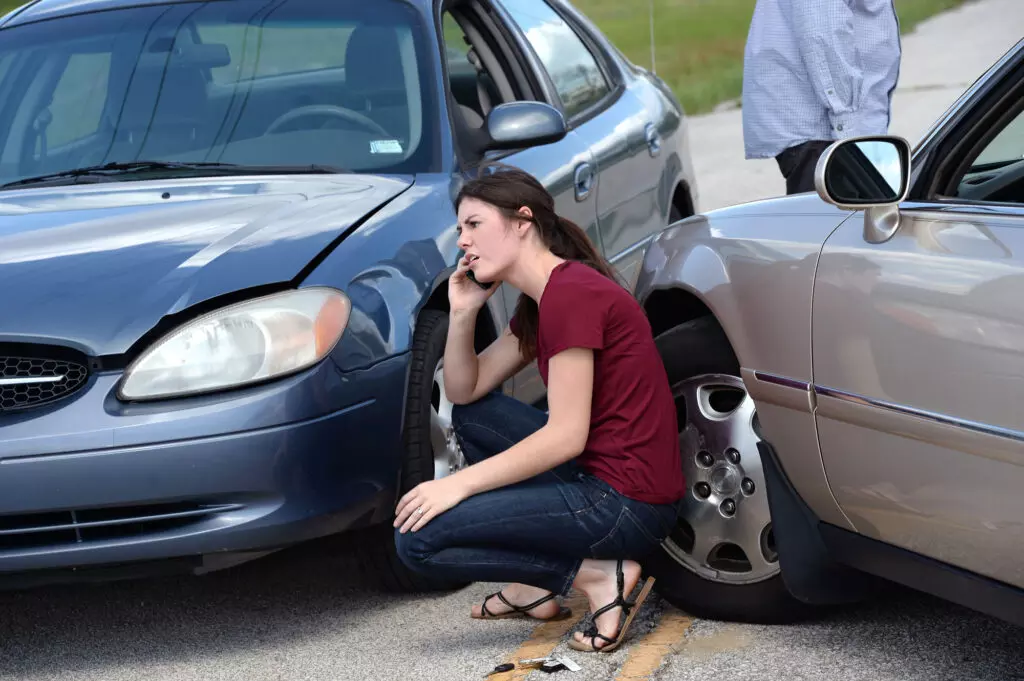TEXTING AND DRIVING CAN LEAD TO FATAL CRASHES (2023)

In today’s fast-paced world, everyone is connected all the time, and smartphones are always within reach. However, this constant connectivity can be dangerous, especially when people use their phones while driving. Texting and driving has become significant problem, and it is responsible for a growing number of accidents and fatalities on the road. In this article, we will explore the dangers of texting and driving and what we can do to prevent it.
Contents
The Risks of Texting and Driving
Texting and driving is a risky behavior that takes a driver’s eyes, hands, and attention off the road. When a driver is texting, they are distracted from the task at hand, which is operating a vehicle safely. This distraction can cause drivers to make mistakes, such as failing to notice traffic signals, swerving out of their lane, or not braking in time to avoid an accident. The risks of texting and driving are not just limited to the driver; it also endangers passengers, pedestrians, and other motorists on the road.
Statistics on Texting and Driving Accidents
The statistics on texting and driving accidents are staggering. According to the National Highway Traffic Safety Administration (NHTSA), distracted driving claimed the lives of 3,142 people in 2019 alone, and an additional 424,000 people were injured in accidents involving distracted drivers. Of those deaths, 8% involved drivers who were using their phones at the time of the accident.
Furthermore, a study by the Insurance Institute for Highway Safety (IIHS) found that drivers who use their phones while driving are four times more likely to be involved in a crash than drivers who do not. The risk is particularly high for younger drivers, with drivers under 20 years old having the highest proportion of fatal crashes involving distracted driving.
Understanding the Causes of Texting and Driving Accidents
There are three types of distraction that can cause texting and driving accidents: cognitive distraction, visual distraction, and manual distraction.
Cognitive Distraction
Cognitive distraction occurs when a driver’s mind is not focused on the task of driving. When a driver is texting, they are mentally preoccupied with reading or writing a message, causing them to become less aware of their surroundings and less able to react quickly to changing road conditions.
Visual Distraction
Visual distraction occurs when a driver’s eyes are not focused on the road. When a driver is texting, their eyes are focused on their phone, taking their attention away from the road ahead. This can cause them to miss important visual cues, such as traffic signals, road signs, or pedestrians.
Manual Distraction
Manual distraction occurs when a driver’s hands are not on the steering wheel. When a driver is texting, they are using at least one hand to hold their phone and type a message, making it difficult for them to control the vehicle. This can cause them to swerve out of their lane or fail to brake in time to avoid a collision.
Read More: TIPS TO BUILDING A STRONG AUTO ACCIDENT CASE (2023)
Preventing Texting and Driving Accidents
There are several ways to prevent texting and driving accidents.
Educate the Public
One of the most effective ways to prevent texting and driving accidents is to educate the public on the risks and consequences of distracted driving. This can be done through public service announcements, school programs, and social media campaigns that raise awareness of the dangers of texting and driving. By increasing public awareness, we can encourage people to put down their phones while driving and to practice safer driving habits.
Read More: Who To Call After A Truck Accident (2023)
Enforce Laws and Penalties
Another way to prevent texting and driving accidents is to enforce laws and penalties for distracted driving. Many states have laws that prohibit the use of handheld devices while driving, and some have penalties for those who violate these laws. By enforcing these laws and imposing penalties, we can send a clear message that texting and driving are not acceptable and that there are consequences for those who engage in this behavior.
Technological Solutions
Finally, there are technological solutions that can help prevent texting and driving accidents. Many smartphones now have features that can detect when a person is driving and automatically disable certain phone functions, such as texting or browsing the internet. Additionally, there are apps that can be installed on phones that can disable texting and other distractions while driving. By utilizing these technological solutions, we can help drivers stay focused on the road and prevent accidents caused by texting and driving.
Conclusion
Texting and driving is a dangerous behavior that puts everyone on the road at risk. The risks of distracted driving are significant, and the statistics show that it is a growing problem that needs to be addressed. By educating the public, enforcing laws and penalties, and utilizing technological solutions, we can help prevent texting and driving accidents and make our roads safer for everyone.
FAQs
- Can hands-free texting or using voice-to-text apps be a safer alternative to texting and driving?
While hands-free texting or using voice-to-text apps may be less distracting than manually typing a message, they are still a form of distracted driving and can be risky. It is always best to avoid all forms of distracted driving and focus on the task of driving.
- What are some signs that a driver may be texting while driving?
Some signs that a driver may be texting while driving include drifting out of their lane, swerving, and not responding to traffic signals or changes in traffic patterns.
- Are there any exceptions to the laws against texting and driving?
There may be exceptions for emergency situations, such as calling 911 or texting to report a crime, but in general, the laws against texting and driving apply to all drivers.
- How can I talk to my teenage driver about the dangers of texting and driving?
It’s important to have an open and honest conversation with your teenage driver about the risks and consequences of texting and driving. Encourage them to put their phone away while driving and to practice safe driving habits.


